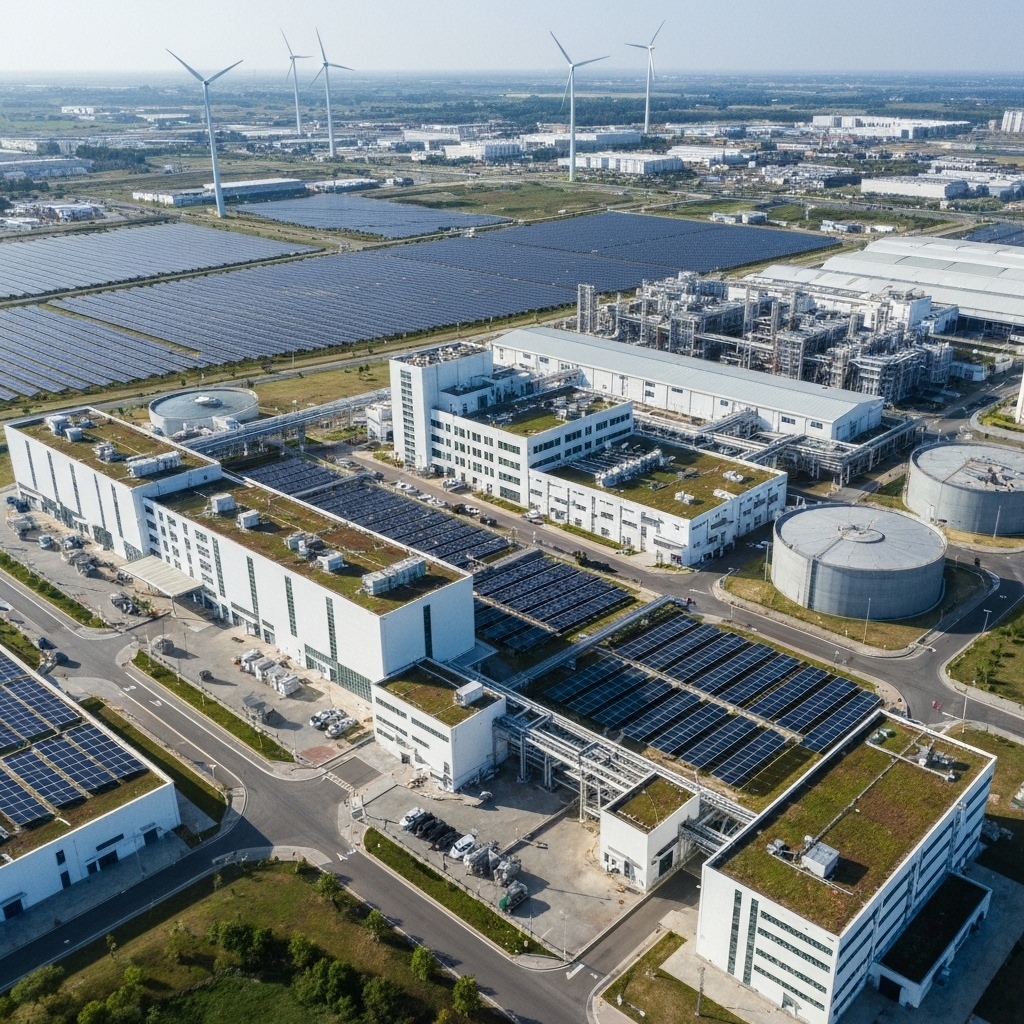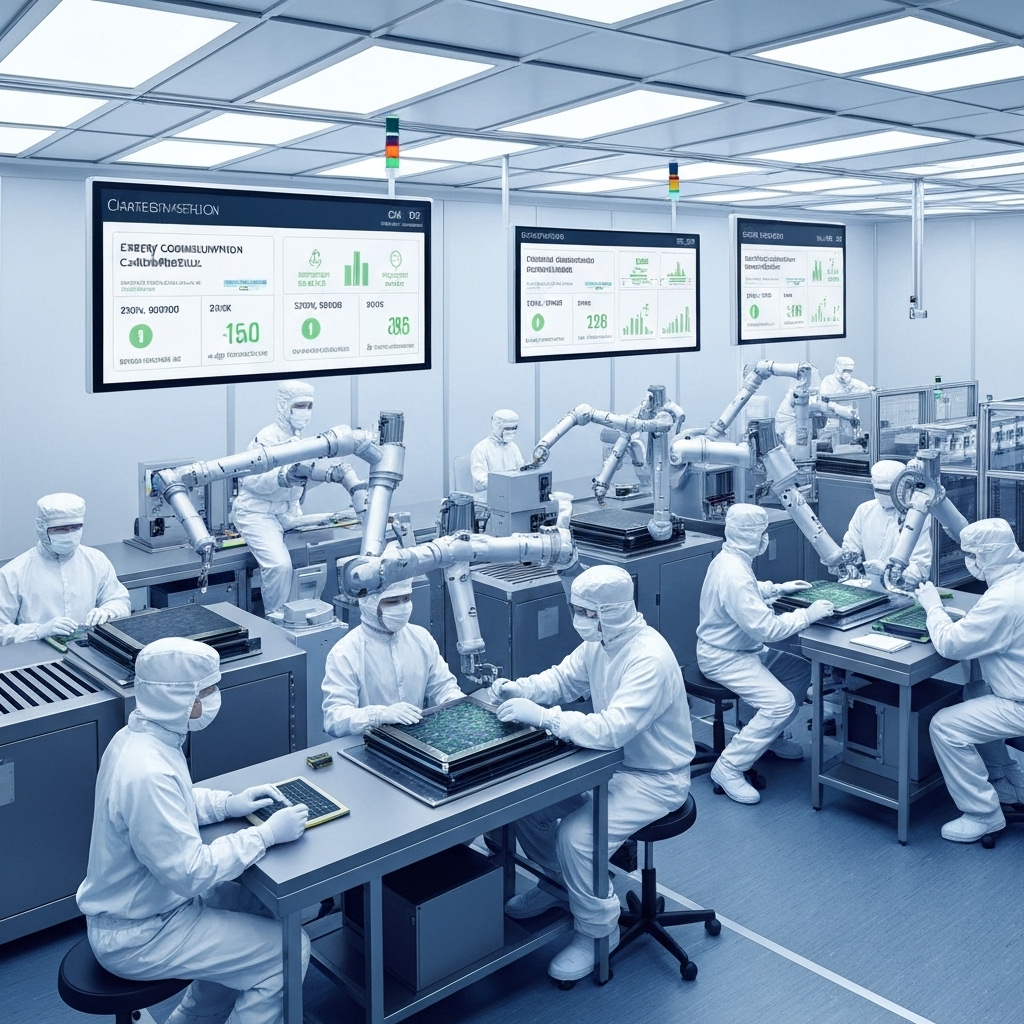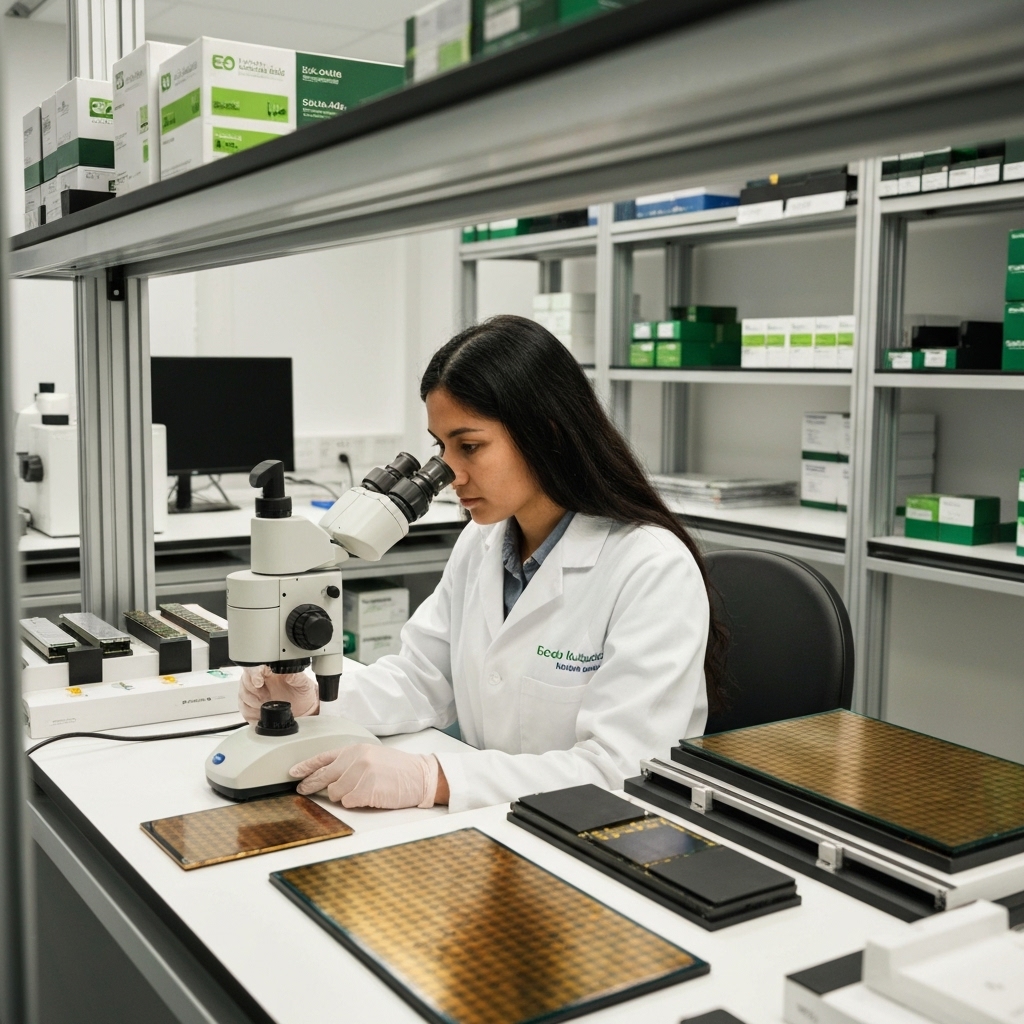The semiconductor industry is undergoing a quiet revolution as companies recognize the environmental toll of traditional chip manufacturing. Fabrication plants, or « fabs, » consume vast amounts of electricity and water—sometimes equivalent to small cities—while relying on hazardous chemicals that pose risks to both ecosystems and human health. As global demand for electronics grows, so does the urgency to rethink these processes. Sustainable Silicon represents a shift toward cleaner production methods, aiming to reduce emissions, conserve resources, and minimize waste throughout the chip lifecycle.
Innovations in materials science and process engineering are paving the way for greener alternatives. Some manufacturers are adopting closed-loop water systems and transitioning to renewable energy sources to power their fabs. Others are exploring non-toxic substitutes for common etching agents and solvents used in chip production. For instance, Intel has committed to achieving net-zero greenhouse gas emissions in its operations by 2040, investing heavily in energy efficiency and recycling programs across its facilities (Intel Sustainability).
Meanwhile, research institutions and startups are pushing the boundaries of what’s possible. Projects like those at the Massachusetts Institute of Technology (MIT) are investigating biodegradable semiconductors and low-temperature manufacturing techniques that could drastically cut energy use (MIT News). These advancements not only promise environmental benefits but also open doors to more resilient and cost-effective supply chains.
Sustainable Silicon isn’t just an ethical imperative—it’s becoming a competitive advantage. Consumers and investors alike are prioritizing environmentally responsible tech, prompting major players to disclose their environmental impact and set ambitious sustainability targets. As this movement gains momentum, it’s clear that the future of computing won’t just be faster or smaller—it will be cleaner, too.
The Environmental Cost of Conventional Chipmaking
Traditional semiconductor manufacturing is incredibly resource-intensive, with fabrication plants consuming massive amounts of energy and water just to maintain operational precision. These facilities, often referred to as « fabs, » can use millions of gallons of ultra-pure water daily—water that must be purified to levels far beyond typical industrial standards to avoid contaminating delicate silicon wafers. This high demand for water raises concerns, especially in regions already facing water scarcity. The U.S. Environmental Protection Agency (EPA) highlights the environmental toll of such consumption, noting that sustainable water management is critical in high-tech manufacturing sectors (epa.gov).
Energy use in semiconductor fabs is equally staggering, with 24/7 operations requiring constant power for cleanroom environments, lithography machines, and cooling systems. Some estimates suggest that a single fab can consume as much electricity as a small city. This level of energy demand not only increases operational costs but also contributes significantly to carbon emissions, especially when the local grid relies on fossil fuels. As global demand for chips grows, so does the industry’s carbon footprint, prompting calls for greener production methods.
Another major environmental concern comes from the use of potent greenhouse gases like sulfur hexafluoride (SF₆), commonly used in plasma etching and chamber cleaning processes. SF₆ is one of the most powerful greenhouse gases known, with a global warming potential over 23,000 times greater than CO₂ over a 100-year period, according to the Intergovernmental Panel on Climate Change (ipcc.ch). Even small leaks can have an outsized climate impact, making gas abatement and alternative chemistries a key focus for reducing the industry’s environmental harm.

Green Innovations in Chip Fabrication
As environmental concerns grow within the tech industry, companies are stepping up to reduce their ecological footprint through innovative solutions. Semiconductor fabrication plants, or fabs, are notoriously resource-intensive, but advancements in closed-loop water recycling systems are making a significant difference. Some facilities now recycle up to 90% of their water, drastically cutting down on freshwater consumption and wastewater discharge. This shift not only conserves a vital resource but also lowers operational costs and regulatory risks associated with water use. For more information on sustainable water management in industrial settings, visit the U.S. Environmental Protection Agency’s sustainable water infrastructure page.
Energy usage is another major focus, with an increasing number of fabs transitioning to renewable sources like solar and wind power. Entire facilities are being powered by clean energy, reducing reliance on fossil fuels and lowering greenhouse gas emissions. Tech giants such as Intel and TSMC have committed to 100% renewable energy for their operations, setting benchmarks for the industry. These efforts align with broader corporate sustainability goals and help meet growing consumer and investor demand for environmentally responsible practices. Learn more about corporate renewable energy initiatives at REN21, a global renewable energy policy network.
Equally important is the shift in manufacturing materials and processes. Equipment manufacturers are actively phasing out fluorinated gases—potent greenhouse gases used in chip production—in favor of safer alternatives with lower global warming potential. These substitutes maintain process efficiency while significantly reducing environmental harm. Organizations like the Semiconductor Industry Association are supporting research and collaboration to accelerate the adoption of low-carbon technologies across the supply chain.
Europe and Asia Lead the Charge
Regions like the European Union and Taiwan are leading the charge in sustainable semiconductor manufacturing, setting benchmarks for the global tech industry. The EU’s Green Deal plays a pivotal role in this shift, imposing strict emissions standards on industrial sectors—including chip production—forcing companies to rethink their environmental impact. These regulations aren’t just about compliance; they’re driving innovation in cleaner fabrication techniques and energy-efficient designs. As a result, European semiconductor firms are increasingly integrating circular economy principles, such as recycling water and chemicals used in chipmaking processes. More information on the EU’s environmental policies can be found on the European Commission’s Green Deal page.
On the other side of the globe, Taiwan Semiconductor Manufacturing Company (TSMC) is making bold moves toward sustainability. As the world’s largest dedicated independent semiconductor manufacturer, TSMC has pledged to source 100% of its energy from renewables by 2050, a goal supported by the RE100 initiative. To meet this target, the company is investing in solar power installations, purchasing renewable energy certificates, and improving energy efficiency across its fabs. These efforts are critical, given that semiconductor manufacturing is notoriously energy-intensive due to the ultra-clean environments and precision equipment required. You can learn more about TSMC’s environmental commitments on their sustainability webpage.
What makes these regional efforts significant is their potential to influence global supply chains. As major customers like Apple and Google demand greener components, chipmakers under EU regulations or TSMC’s leadership are better positioned to meet those expectations. This ripple effect encourages suppliers and partners worldwide to adopt similar standards, amplifying the environmental benefits beyond just one facility or country. Collaboration with organizations like the International Energy Agency also helps align industry practices with broader climate goals.
Still, challenges remain—especially in balancing sustainability with the booming demand for advanced chips driven by AI, electric vehicles, and 5G technology. Scaling up renewable energy infrastructure and ensuring a stable power supply for 24/7 semiconductor operations isn’t trivial. Yet, the progress made by the EU and TSMC demonstrates that environmental responsibility and technological advancement don’t have to be mutually exclusive. With continued investment and policy support, sustainable chip production could become the new global standard rather than the exception.

Circular Economy and Sustainable Design
The semiconductor industry is increasingly adopting circular economy principles to address growing environmental concerns. Rather than following the traditional linear model of production and disposal, companies are now focusing on designing chips with extended lifespans and improved repairability. This shift not only reduces the frequency of replacements but also lowers the overall environmental footprint of electronic devices. By prioritizing durability and serviceability, manufacturers are helping consumers keep their devices functional longer, aligning with broader sustainability goals.
One innovative approach gaining traction is the development of modular chip designs, which allow for individual components to be upgraded or replaced without discarding the entire device. This modularity supports a more sustainable electronics ecosystem by minimizing waste and conserving valuable resources. Some firms are also exploring biodegradable substrates as an alternative to conventional silicon-based materials, potentially reducing the long-term impact of electronic waste. These advancements signal a move toward smarter design practices that consider a product’s full lifecycle.
Recyclability is another key focus, with industry leaders investing in processes to recover rare and valuable materials from used chips. Efficient recycling methods can reclaim metals like gold, copper, and palladium, reducing the need for environmentally damaging mining operations. Organizations such as the International Electrotechnical Commission (IEC) are helping standardize these practices to ensure global scalability. As regulations tighten and consumer demand for greener products grows, these initiatives are becoming essential for long-term industry resilience.

Conclusion: A Global Shift Toward Greener Tech
The semiconductor industry, long associated with high energy consumption and significant environmental impact, is undergoing a pivotal shift toward sustainability. As demand for chips surges with the rise of AI, electric vehicles, and IoT devices, so does the need for cleaner production methods. Leading manufacturers are now investing heavily in renewable energy integration, water recycling systems, and low-emission fabrication processes to reduce their carbon footprint. This transition isn’t just about compliance—it’s about future-proofing operations in an era where environmental accountability influences investor decisions and consumer trust.
Innovations such as extreme ultraviolet (EUV) lithography are not only advancing chip performance but also improving energy efficiency during manufacturing. Companies like TSMC and Intel have committed to 100% renewable energy targets across their operations, with TSMC partnering with Ørsted to develop offshore wind projects in Taiwan (TSMC Sustainability). Meanwhile, research institutions and consortia like the Semiconductor Research Corporation are exploring next-gen materials and closed-loop systems that minimize waste and toxicity.
Regulatory pressure is accelerating this green transformation. The European Union’s Green Deal and the U.S. CHIPS and Science Act both include provisions that incentivize sustainable manufacturing practices. These policies are pushing companies to adopt transparent reporting standards and invest in greener technologies. As sustainability becomes a differentiator in global markets, collaboration between governments, tech firms, and environmental experts will be key to scaling solutions without sacrificing yield or innovation.
Sustainable Silicon is no longer a distant ideal—it’s emerging through measurable progress on factory floors and R&D labs worldwide. From reducing per-wafer energy use to pioneering biodegradable packaging for chip transport, the industry is proving that eco-conscious manufacturing can go hand-in-hand with cutting-edge technology. Every step toward greener fabrication strengthens the foundation for a more responsible digital future.
